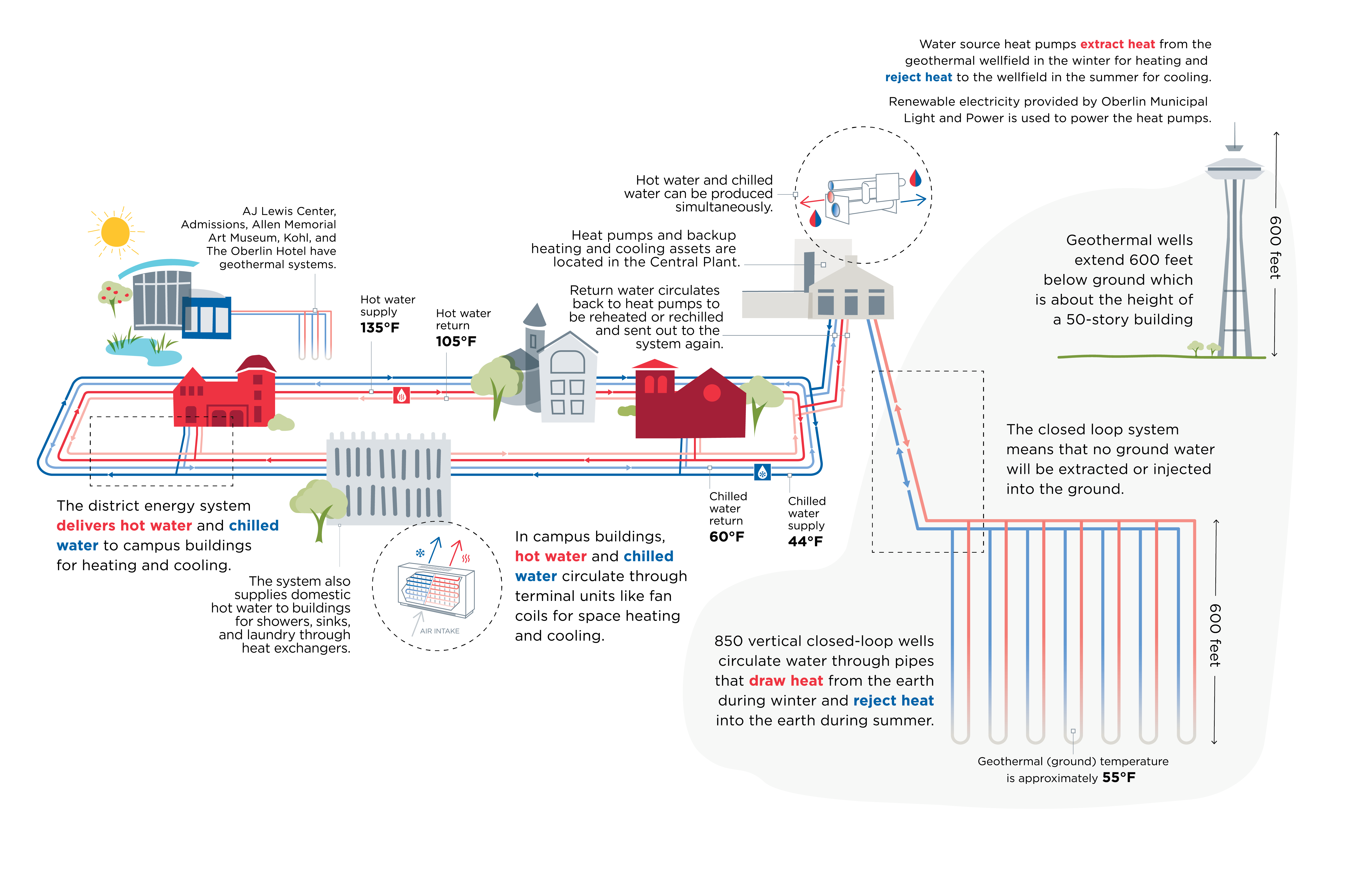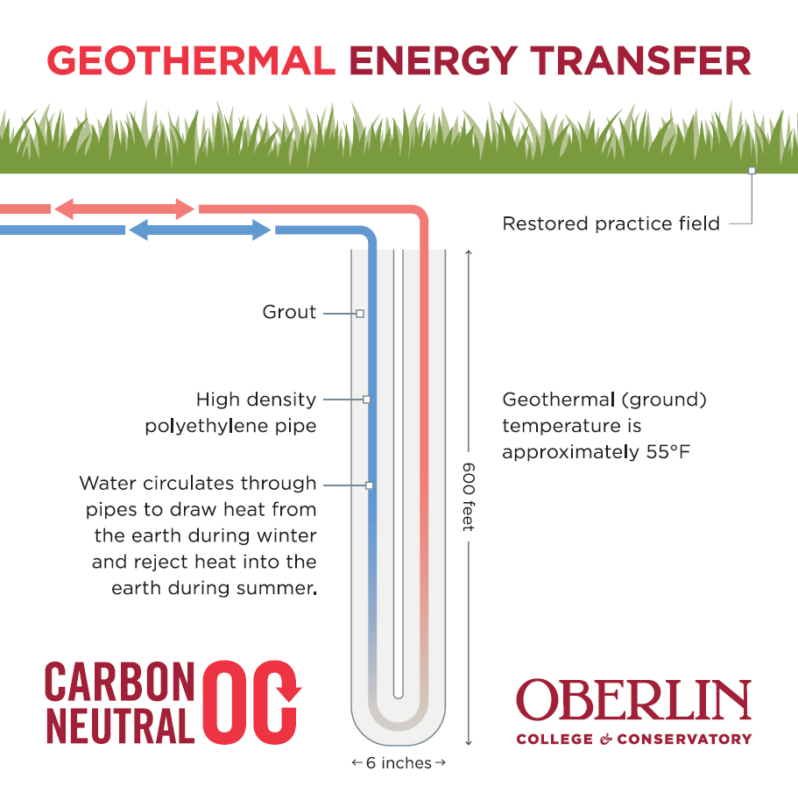About Oberlin’s Geothermal
To achieve carbon neutrality by 2025, Oberlin College is half way through a four-year program that includes replacing fossil fuels with geothermal energy as the source of heating and cooling for campus buildings.
Installation of approximately 850 geothermal wells as the common source of heating and cooling across campus, started in May 2023. Water source heat pumps, powered by renewable electricity from Oberlin Municipal Light and Power System (OMLPS), will extract heat from the wells in winter for heating and reject heat to the wells in summer for cooling.

Oberlin College Geothermal
- Vertical closed-loop wells circulate water through pipes that draw heat from the earth during winter and reject heat into the earth during summer.
- Over time, the geothermal wellfield acts as storage to provide warmer and cooler water needed for the heating and cooling systems, respectively.
- The closed loop system means that no ground water will be extracted or injected into the ground.
- The geothermal wellfield design incorporates local geology, topography, and climate conditions.
- Adam Jospeh Lewis Center, the Hotel at Oberlin and Admissions, Art Museum, and Kohl buildings are currently served by independent geothermal heat pump systems that will remain in place.

2023 Geothermal Wellfield Installation
Geothermal well drilling began in May 2023 in the north practice fields. This work is scheduled to be completed in fall 2024.
The entire wellfield will be underground, and the practice fields will be restored once construction is complete.
There will be three to four drill rigs on-site. Each drill rig can produce approximately one well per day, so we are targeting approximately 20 to 25 wells per week.
The drillers are expected to work from sun-up to sun-down five to six days per week.
The new geothermal heat pump and wellfield system will be commissioned once completed in 2024 and 2025.
